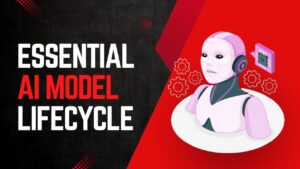Imagine having the power to run Windows, Linux, or even an older OS like Windows XP—all on your current computer, without wiping your hard drive or buying new hardware. That’s the magic of a virtual machine (VM). Virtual machines have revolutionized the way we interact with technology, offering a sandboxed environment where you can test software, experiment with new operating systems, or maintain isolated setups for work and play. Whether you’re a developer debugging code, a student learning about operating systems, or just a curious tech enthusiast, setting up a VM on your PC is a skill worth mastering.
In this comprehensive article, we’ll take you through every step of the process—from selecting the right virtualization software to configuring your first VM. No advanced degree in computer science is needed; just a PC, some free software, and a bit of patience. By the end, you’ll have a fully functional virtual machine ready to tackle whatever project you throw at it. Let’s dive in and unlock the potential of virtualization!
On This Page
Table of Contents
1. What Is a Virtual Machine and Why Use One?
A virtual machine is essentially a computer within your computer. It’s a software-based emulation of a physical machine, complete with its own CPU, memory, storage, and operating system. Using virtualization technology, your PC can host multiple VMs, each running independently without interfering with your main system.
Why Use a VM?
- Experiment Safely: Test software or updates without risking your primary OS.
- Run Multiple OSes: Use Linux alongside Windows or revive an old OS for nostalgia.
- Isolation: Keep work, personal, or risky apps separate.
- Development: Debug code or simulate network environments.
- Cost-Effective: No need for extra hardware—just your existing PC.
Think of a VM as a digital playground—whatever happens inside stays inside, leaving your real system untouched.
2. Choosing the Right Virtualization Software
Before you start, you’ll need virtualization software (also called a hypervisor) to create and manage your VMs. Here are the top options:
| Software | Pros | Cons | Best For |
|---|---|---|---|
| VMware Workstation | Robust features, great support | Paid (Pro version) | Professionals, power users |
| Oracle VirtualBox | Free, open-source, cross-platform | Slightly steeper learning curve | Beginners, hobbyists |
| Microsoft Hyper-V | Built into Windows 10/11 Pro | Windows-only, less intuitive | Windows users |
How to Choose:
- Free vs. Paid: VirtualBox is ideal if you’re budget-conscious; VMware suits advanced users willing to invest.
- OS Compatibility: Ensure the software works with your PC’s OS (e.g., Hyper-V is Windows-only).
- Ease of Use: Beginners might prefer VirtualBox’s straightforward interface.
For this guide, we’ll use Oracle VirtualBox—it’s free, widely compatible, and beginner-friendly.
3. System Requirements and Preparation
Setting up a VM requires your PC to meet certain hardware and software benchmarks.
Minimum Requirements:
- CPU: A processor with virtualization support (Intel VT-x or AMD-V). Most modern CPUs have this—check your specs in your BIOS or online.
- RAM: 8GB minimum (16GB recommended). You’ll allocate some to the VM, so more is better.
- Storage: At least 20-30GB free space for the VM and OS files.
- OS: Windows, macOS, or Linux (host OS must support your chosen hypervisor).
Preparation Steps:
- Check Virtualization Support:
- On Windows: Open Task Manager > Performance tab > look for “Virtualization: Enabled.”
- If disabled, enable it in your BIOS (restart PC, press DEL/F2, find VT-x/AMD-V and enable from there).
- Free Up Space: Delete unnecessary files or use an external drive.
- Update Your System: Ensure your OS and drivers are current to avoid compatibility issues.
4. Downloading and Installing the Virtualization Software
Let’s get VirtualBox installed.
Step-by-Step Process:
- Visit the Official Site: Go to virtualbox.org.
- Download: Select the version for your OS (e.g., “Windows hosts”).
- Run the Installer:
- Double-click the downloaded file.
- Follow the prompts (default settings work fine).
- Approve any network adapter warnings—it’s safe.
- Verify Installation: Open VirtualBox. You’ll see a clean interface with a “New” button.
Tip: Install the VirtualBox Extension Pack (from the same site) for extras like USB support.
5. Obtaining an Operating System Image (ISO)
Your VM needs an operating system to run. This comes as an ISO file, a digital copy of an OS installer.
Where to Get an ISO:
- Windows: Download from Microsoft’s official site (requires a license key or trial mode).
- Linux: Free distros like Ubuntu (ubuntu.com) or Fedora (getfedora.org).
- Other: Older OSes might be available via legal archives or your own discs (convert to ISO with tools like ImgBurn).
Steps:
- Choose Your OS: For this guide, we’ll use Ubuntu—it’s free and lightweight.
- Download: Visit ubuntu.com, click “Download,” and save the ISO (e.g., ubuntu-22.04-desktop-amd64.iso).
- Verify: Check the file size (around 2-3GB) to ensure it’s complete.
6. Creating Your First Virtual Machine
Now, let’s build the VM in VirtualBox.
Step-by-Step Process:
- Open VirtualBox: Launch the program.
- Click “New”: A wizard will pop up.
- Name Your VM: Enter something like “Ubuntu Test.”
- VirtualBox may auto-detect the OS type—select “Linux” and “Ubuntu (64-bit)” if not.
- Allocate RAM:
- Slide the bar to 2048MB (2GB) minimum, 4096MB (4GB) if you have 16GB total.
- Don’t exceed the green zone to keep your host OS stable.
- Create a Virtual Hard Disk:
- Choose “Create a virtual hard disk now.”
- Select “VDI” (VirtualBox Disk Image).
- Pick “Dynamically allocated” (grows as needed).
- Set size to 20GB (adjust based on your needs).
- Finish: Click “Create.” Your VM will appear in the VirtualBox sidebar.
7. Installing the Operating System on the VM
Time to breathe life into your VM with Ubuntu.
Step-by-Step Process:
- Select Your VM: Highlight it in VirtualBox and click “Settings.”
- Attach the ISO:
- Go to “Storage” > “Empty” under Controller: IDE > click the disc icon.
- Choose “Choose a disk file” > select your Ubuntu ISO > OK.
- Start the VM: Click “Start” on the main screen.
- Boot the ISO: A new window opens—select “Try or Install Ubuntu.”
- Install:
- Click “Install Ubuntu.”
- Follow prompts: choose language, keyboard, and “Normal installation.”
- Select “Erase disk and install Ubuntu” (this only affects the VM’s virtual disk).
- Set your username/password > wait for installation (5-15 minutes).
- Restart: When prompted, click “Restart Now,” then press Enter to eject the virtual disc.
Your VM will reboot into a fresh Ubuntu desktop!
8. Configuring and Optimizing Your Virtual Machine
Let’s tweak your VM for peak performance.
Configuration Tips:
- Display: In Settings > Display, increase video memory to 128MB and enable 3D acceleration (if supported).
- Network: Settings > Network > Enable “NAT” for internet access.
- Shared Folders: Settings > Shared Folders > Add a folder to transfer files between host and VM.
- Guest Additions:
- In the VM window, go to Devices > Insert Guest Additions CD Image.
- Run the installer in Ubuntu for better screen resolution and clipboard sharing.
Optimization:
- Allocate more CPU cores (Settings > System > Processor) if your PC has extras.
- Reduce VM resources if your host slows down.
9. Troubleshooting Common Issues
Things not working? Here’s how to fix common hiccups:
| Issue | Cause | Solution |
|---|---|---|
| VM won’t start | Virtualization disabled in BIOS | Enable VT-x/AMD-V in BIOS settings |
| Slow performance | Too few resources | Increase RAM/CPU allocation |
| No internet | Network misconfigured | Switch to NAT in Network settings |
| Installation fails | Corrupted ISO | Redownload and verify file integrity |
Pro Tip: Check VirtualBox’s “Help” menu or forums for specific error codes.
10. Exploring Advanced Features
Ready to level up? Try these:
- Snapshots: Save your VM’s state (Machine > Take Snapshot) to revert if something breaks.
- Cloning: Duplicate your VM (right-click > Clone) for testing variations.
- USB Devices: Plug in drives or peripherals via Devices > USB.
- Networking: Switch to “Bridged Adapter” for VM-to-host communication.
Experimentation is key—VMs are forgiving thanks to their isolated nature.
WrapUP
Congratulations—you’ve successfully set up a virtual machine on your PC! From downloading VirtualBox to installing Ubuntu, you’ve built a powerful tool that’s ready for anything. Whether you’re testing a quirky app, learning a new OS, or creating a secure workspace, your VM is a gateway to endless possibilities. The best part? You did it all without extra hardware or tech wizardry—just your PC and some curiosity.
As you grow comfortable, don’t stop here. Play with snapshots, tweak settings, or even run multiple VMs at once. Virtualization is a skill that keeps giving, adapting to whatever you dream up next. So, what’s your first project with this new digital playground? Fire up your VM and find out—happy virtualizing!

FAQs
What is a virtual machine, and how is it different from my regular PC?
A virtual machine (VM) is a software-based simulation of a computer that runs on your physical PC. Unlike your regular system, a VM operates in an isolated environment with its own operating system, CPU, memory, and storage, all managed by virtualization software. It’s like having a separate computer inside your existing one, without needing extra hardware.
Do I need a powerful PC to run a virtual machine?
Not necessarily, but your PC should meet some basic requirements: a CPU with virtualization support (Intel VT-x or AMD-V), at least 8GB of RAM (16GB recommended), and 20-30GB of free storage. The more resources you have, the smoother your VM will run, especially if you plan to use it alongside your main OS.
Is VirtualBox really free, or are there hidden costs?
Yes, Oracle VirtualBox is completely free for personal and educational use under its open-source license. There are no hidden costs for the core software. However, optional features like the Extension Pack (for USB support, encryption, etc.) are free for personal use but require a paid license for commercial purposes.
Can I run a Windows VM on a Linux PC, or vice versa?
Absolutely! Virtualization software like VirtualBox is cross-platform, meaning you can run a Windows VM on a Linux host, a Linux VM on a Windows host, or any combination, as long as you have a valid ISO file or license for the guest OS.
How much RAM should I allocate to my VM?
It depends on your PC’s total RAM and the guest OS. For a lightweight OS like Ubuntu, 2GB (2048MB) is enough, while Windows 10/11 might need 4GB (4096MB) or more. Allocate enough to run the VM smoothly but leave plenty for your host OS—stay in the “green zone” in VirtualBox’s settings to avoid slowing your PC.
Where can I legally get an ISO file for my VM?
You can download ISO files legally from official sources:
Windows: Microsoft’s website (requires a license or trial mode).
Linux: Sites like ubuntu.com or getfedora.org (free).
Older OSes: Use your own discs (convert to ISO) or trusted archives, ensuring compliance with licensing laws.
Why does my VM say “Virtualization is disabled”?
This error means your CPU’s virtualization features (Intel VT-x or AMD-V) are turned off in your BIOS. Restart your PC, enter the BIOS (press DEL, F2, or similar), and enable VT-x or AMD-V. Save and reboot—your VM should work after that.
Can I access the internet from my virtual machine?
Yes! In VirtualBox, go to Settings > Network, enable the adapter, and set it to “NAT.” This lets your VM share your PC’s internet connection. For advanced setups (e.g., VM-to-host communication), try “Bridged Adapter” mode.
What happens if I delete my VM? Will it affect my real PC?
Deleting a VM in VirtualBox only removes the virtual disk and settings tied to that VM—it won’t harm your real PC or its files. Just be cautious not to delete shared folders or files stored outside the VM that you still need.
Can I run multiple VMs at the same time?
Yes, if your PC has enough resources. Each VM uses a portion of your CPU, RAM, and storage, so running multiple VMs simultaneously requires a powerful system (e.g., 16GB+ RAM, multi-core CPU). Start with one and scale up as you test your PC’s limits.
Why is my VM running so slowly?
Slow performance could stem from:
Low Resources: Increase allocated RAM or CPU cores in Settings > System.
No Guest Additions: Install VirtualBox Guest Additions for better optimization.
Host Overload: Close other apps on your PC to free up resources.
Can I transfer files between my PC and the VM?
Yes! In VirtualBox, go to Settings > Shared Folders, add a folder from your PC, and make it accessible in the VM. Alternatively, install Guest Additions for drag-and-drop or clipboard sharing between host and guest.
Do I need a separate license for the OS in my VM?
It depends:
Windows: Yes, you need a valid license key for each VM instance (or use trial mode).
Linux: No, most distros like Ubuntu are free and open-source.
Check the OS’s licensing terms to stay compliant.
What are snapshots, and how do I use them?
Snapshots are save points for your VM’s state. In VirtualBox, go to Machine > Take Snapshot to save your current setup. If something goes wrong (e.g., a failed update), revert to the snapshot via the Snapshots tab. It’s like a “undo” button for your VM!









